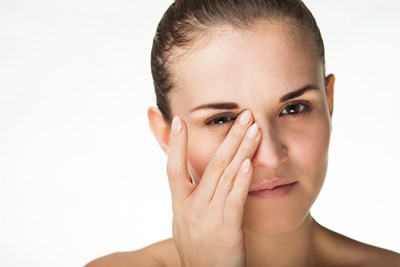A scratch on the eye might not seem like much, but it can be extremely detrimental to your sight. Gaining an understanding of the anatomical impact and other important details of a damaged cornea might encourage a bit more caution. Here’s a look at ten terms to help you understand damaged corneas.
- Cornea: The cornea is the clear lens that covers the front of the eye. A protective covering for the pupil and iris, it is shaped in such a way as to angle light perfectly through the pupil and through the eyeball where the retina turns rays into impulses. The cornea is made up of five different layers, each with a very distinct function. From outermost to innermost, they are the corneal epithelium, Bowman’s membrane, stroma, Descemet’s membrane, and the endothelium.
- Corneal Epithelium: The corneal epithelium is the outermost of the five corneal layers. There are thousands of tiny nerve endings, which is what makes a tiny scratch so incredibly uncomfortable. The epithelium is the first protective layer, but it also nourishes the other four layers by absorbing nutrients from tears and oxygen.
- Bowman’s Membrane: Bowman’s membrane is located behind the basement membrane, which is the anchor of the epithelium cells. Made up of collagen (a type of protein fiber), the cells of this layer scar easily. This scarring, depending upon size and location, can cause serious vision impediments.
- Descemet’s Membrane: After Bowman’s membrane comes the stroma, a thick layer of water and collagen primarily responsible for bending light. And behind that lies Descemet’s membrane. Although it is one of the thinner layers, it is extremely strong and vital to the protective function of the cornea. It heals quickly, supplied by cells from the endothelium and made up of a specific form of collagen.
- Endothelium: The final layer of the cornea is the endothelium. In addition to replacing Descemet’s membrane with cells, it keeps the stroma layer from building up too much fluid. This keeps the stroma transparent, which is vital to clear vision. Additionally, the eye’s natural process does not replace cells of the endothelium.
- Slit Lamp Examination: A slit lamp examination is a common tool used by eye doctors. It is a specialized magnifying tool with a bright light attached. This allows the eye doctor to easily examine the optical anatomy for any abnormalities -- whether accidental injury or because of genetic formation.
- Fluorescein Dye: Fluorescein dye is particularly important when examining the eye for damage to the cornea. Your eye doctor may apply a numbing drop, followed by the dye. The fluorescein fills in any scratches or defects on the surface of the cornea, becoming obvious with a specialized cobalt light. In this way, your eye doctor can gauge the size of the scratch and if its location will be problematic.
- Corneal Erosion: A corneal erosion can occur in the aftermath of a corneal abrasion. The new cells that form on the epithelium aren’t always as firmly attached as the original cells were. When those cells are re-detached, this is considered an erosion. Erosions can occur easily, from something as gentle as opening your eyes after a night of sleep.
- Iritis: Iritis is an inflammation of the eye that is specific to the iris -- the colored ring around the pupil. While this can be caused by genetic influences and other injuries, corneal abrasions caused by certain plants, like pine needles, can also result in iritis. If you notice any indications of iritis following a corneal injury, it’s extremely important to seek medical attention, as it can result in long-lasting complications, such as glaucoma.
- Photosensitivity: Damage to the corneas can cause temporary or lasting side effects to your vision. Among these is photosensitivity, or sensitivity to light. It can be painful to be exposed to intense or long lasting light because of the all the parts of the eye work together -- damage to one part interrupts the entire system. Wearing sunglasses until the injury has healed can help prevent this.



